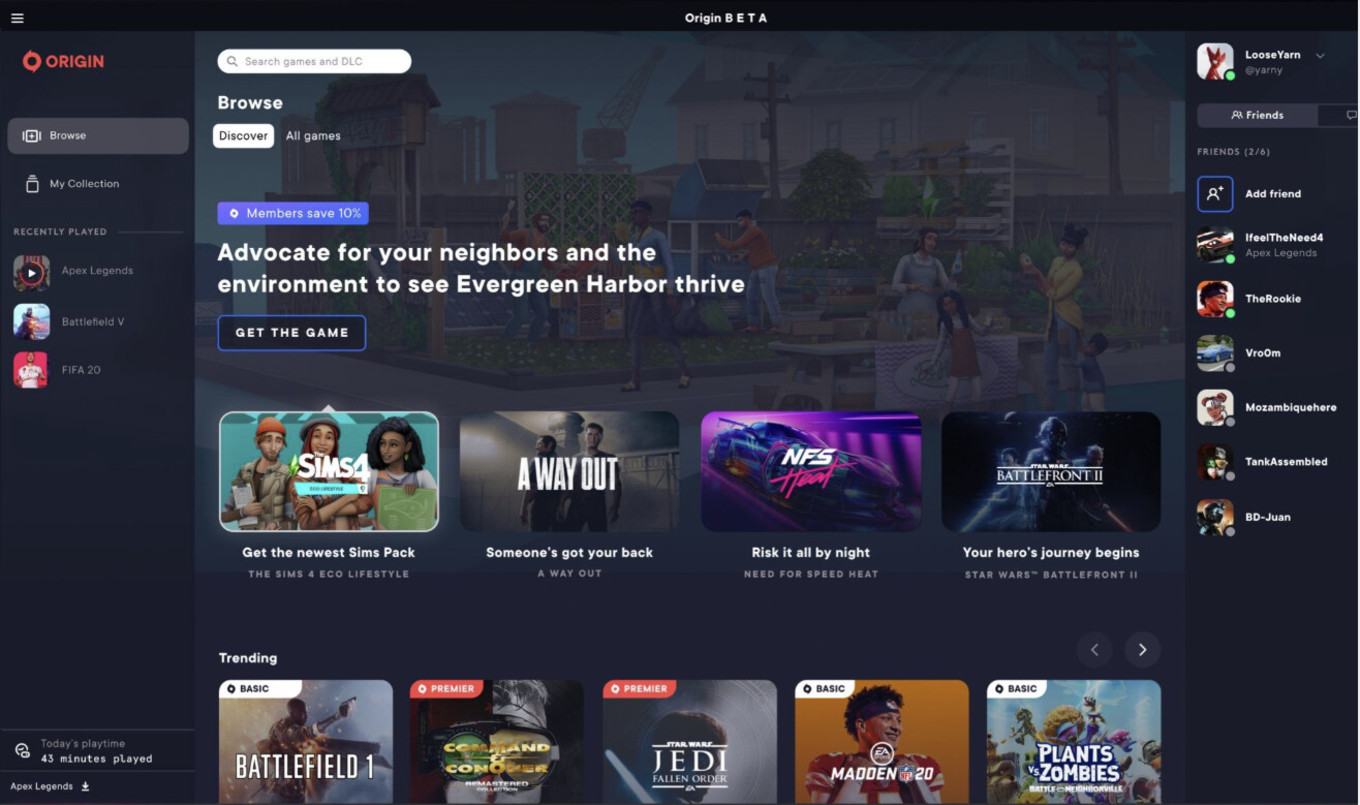
- #Launch error unrecognized game client origin how to
- #Launch error unrecognized game client origin for android
- #Launch error unrecognized game client origin code
Supports it, this is the recommended mechanism for obtaining the authorization code. That is possible on many, but not all, platforms.
#Launch error unrecognized game client origin code
To receive the authorization code using this URL, your application must be listening on the
#Launch error unrecognized game client origin how to
Loopback IP address (macOS, Linux, Windows desktop) Important: The loopback IP address redirect option isĭEPRECATED for the Android, Chrome app, and iOS OAuth client types.Īddress migration guide for instructions on how to migrate to a supported alternative. Some platform-specific implementations of custom URI scheme redirects. In addition, the libraries and samples demonstrate Note: See the redirect_uri parameter definition for details about the format of the custom You can find this value inįor UWP apps, the custom URI scheme cannot be longer than 39 characters. Enter your app's 12-character Microsoft Store ID.Select the Universal Windows Platform application type.In the Apple Developer Account documentation for more information. The App Store ID is the final part of the URL. Select the Share button (square and arrow up symbol).The Store ID isĪ numeric string included in every Apple App Store URL. The bundle ID is also displayed in the General Information section ofĮnter your app's App Store ID if the app is published in Apple's App Store. Is most commonly displayed in the General pane or the Signing & Capabilities pane of the Key in your app's information property list resource file ( ist). Enter the bundle identifier for your app.
#Launch error unrecognized game client origin for android
Google APIs for Android documentation for more information. SHA1 value in the Certificate fingerprints section of the Included with Java to print certificate information in a human-readable format. If you manage your own keystore and signing keys, use the keytool utility.Enter the SHA-1 signing certificate fingerprint of the app distribution.Īpp signing by Google Play, copy the SHA-1įingerprint from the app signing page of the Play Console.Enter the package name of your Android app.Choose the client type that is recommended for yourĪpplication, name your OAuth client, and set the other fields in the form asĪ custom URI scheme is recommended for Android apps, iOS apps, and Universal Windows Platform The sections below describe the client types and the redirect methods that Google'sĪuthorization server supports.Click Create credentials > OAuth client ID.Your applications can then use the credentials to access APIs The following steps explain how toĬreate credentials for your project. That identify the application to Google's OAuth 2.0 server. If prompted, read and accept the API's Terms of Service.Īny application that uses OAuth 2.0 to access Google APIs must have authorization credentials.Select the API you want to enable, then click the Enable button.If the API you want to enable isn't visible in the list, use search toįind it, or click View All in the product family it belongs to. The API Library lists all available APIs, grouped by productįamily and popularity.If prompted, select a project, or create a new one.Prerequisites Enable APIs for your projectĪny application that calls Google APIs needs to enable those APIs in the We recommend the following libraries and samples to help you implement the OAuth 2.0 flow Or Sign-In on TVs and Limited Input Devices. Implement than the lower-level protocol described here.įor apps running on devices that do not support a system browser or that have limited inputĬapabilities, such as TVs, game consoles, cameras, or printers, see Responses from Google's authorization server.įor mobile apps, you may prefer to use Google Sign-in forĬlient libraries handle authentication and user authorization, and they may be simpler to That installed apps must open the system browser and supply a local redirect URI to handle This authorization flow is similar to the one used for They can access Google APIs while the user is present at the app or when Installed apps are distributed to individual devices, and it is assumed that these appsĬannot keep secrets. Users to store files in their Google Drives. Usernames, passwords, and other information private.įor example, an application can use OAuth 2.0 to obtain permission from OAuth 2.0 allows users to share specific data with an application while keeping their

This document explains how applications installed on devices like phones, tablets, andĬomputers use Google's OAuth 2.0 endpoints to authorize access to You've selected the right flow for your application. Overview summarizes OAuth 2.0 flows that Google supports, which can help you to ensure that OAuth 2.0 overview before getting started. Note: If you are new to OAuth 2.0, we recommend that you read the


 0 kommentar(er)
0 kommentar(er)
